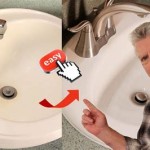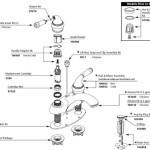How To Replace A Bathroom Vanity And Sink
Replacing a bathroom vanity and sink can be a great way to update the look of your bathroom. It can also be a great way to improve the functionality of your bathroom, by adding more storage space or a new sink that is more suited to your needs. Depending on the size of your bathroom and the complexity of the plumbing, replacing a bathroom vanity and sink can be a relatively easy DIY project. However, it's generally recommended to hire an experienced plumber if you are not confident in your abilities to complete the task yourself.
Here are the steps you need to follow to replace a bathroom vanity and sink, if you choose to DIY:
- Turn off the water supply. The first step is to turn off the water supply to your bathroom. This is usually done by turning off the main water valve, which is typically located in the basement or crawl space. Once the water supply is turned off, open the faucets in your bathroom to release any residual water in the pipes.
- Disconnect the plumbing. Once the water supply is turned off, you can disconnect the plumbing from the vanity and sink. Start by disconnecting the water supply lines from the faucets. Then, disconnect the drain lines from the sink. Be sure to have a bucket or bowl on hand to catch any water that may drain out of the pipes.
- Remove the old vanity and sink. Once all of the plumbing is disconnected, you can remove the old vanity and sink. If the vanity is attached to the wall, you will need to remove the screws or bolts that are holding it in place. Once the vanity is loose, you can carefully lift it off of the floor and remove it from the bathroom.
- Install the new vanity. Once the old vanity is removed, you can install the new vanity. Start by placing the vanity in the desired location. Then, level the vanity using a level and shim it as needed. Once the vanity is level, secure it to the wall by driving screws or bolts through the mounting holes.
- Connect the plumbing. Once the vanity is installed, you can connect the plumbing. Start by connecting the water supply lines to the faucets. Then, connect the drain lines to the sink. Be sure to tighten all of the connections securely to prevent leaks.
- Install the sink. Once the plumbing is connected, you can install the sink. Start by placing the sink in the opening in the vanity. Then, secure the sink to the vanity by following the manufacturer's instructions.
- Turn on the water supply. Once the sink is installed, you can turn on the water supply. Check for any leaks around the connections. If there are no leaks, your new bathroom vanity and sink are now installed!
Here are some additional tips for replacing a bathroom vanity and sink:
- If you are not comfortable replacing the plumbing yourself, it is recommended to hire an experienced plumber to do the job for you.
- When choosing a new bathroom vanity and sink, be sure to take into account the size of your bathroom and the style of your décor.
- Be sure to measure the space where the new vanity and sink will be installed before you purchase them.
- Follow the manufacturer's instructions carefully when installing the new vanity and sink.
- Once the new vanity and sink are installed, be sure to check for any leaks around the connections.

How To Install A Bathroom Vanity And Sink

How To Install A Bathroom Vanity


Replace Vanity Top And Faucet Diy Network


How To Remove A Bathroom Vanity Remodel

How To Remove A Bathroom Vanity Budget Dumpster


How To Remove And Install Bathroom Vanity Diy

How To Install Or Remove A Bathroom Vanity Homeserve Usa
See Also







